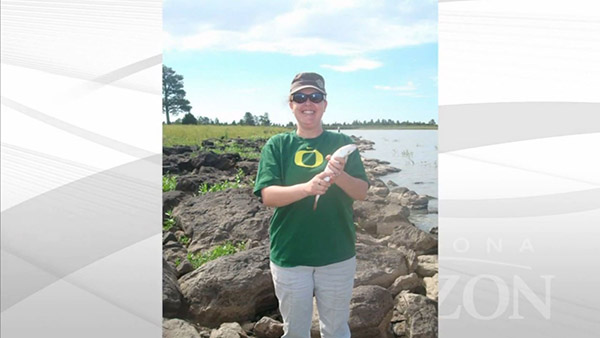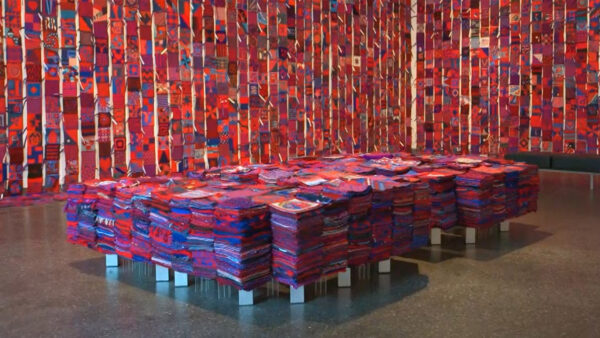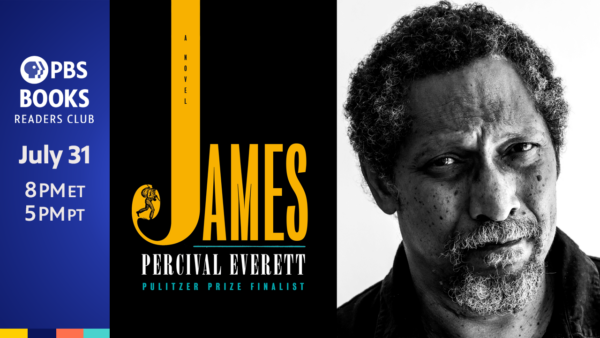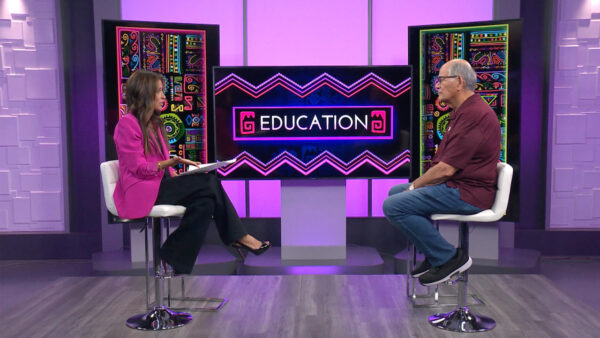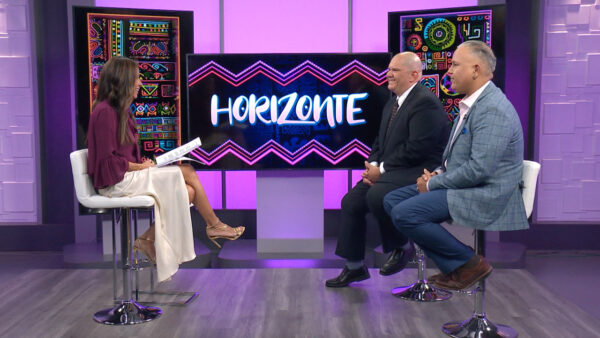Human Trafficking is one of the fastest growing crimes in the United States. Carla Sandine, the Arizona League to End Regional Trafficking (ALERT) outreach coordinator and Bill Solomon, Arizona Assistant United States Attorney, join HORIZONTE to talk about ALERT’s campaign to help bring awareness to the human trafficking issue and assist victims in Phoenix metro area.
Jose Cardenas:
Good evening. I'm Jose Cardenas. An alarming number of children under six are being treated for burn injuries here in Arizona . A new study shows more scald burn injuries are happening to Latino children. Hear about the results and what's being done to prevent it from happening. And human trafficking is one of the fastest-growing crimes in the United States . We'll discuss a campaign bringing awareness to the issue and why it is a growing concern here. These stories coming up next on Horizonte.
Announcer:
Funding for Horizonte is provided by S.R.P. S.R.P.'s business is water and power. But our dedication to the community doesn't stop there. S.R.P. delivering more than power.
Jose Cardenas:
According to the Arizona burn center, in 2005 Hispanic children represented 64% of all children hospitalized for scald burns at their facility. The Maricopa Integrated Health system along with two community based organizations are working with parents and caregivers of children to gather information to come up with a scald burn prevention campaign. Joining us to talk about it is Dr. Ruth Rimmer. Dr. Rimmer is director of psychosocial research at The Arizona Burn Center at Maricopa integrated health systems. Also here is Lonnie Rubio Jones, Lonnie is the executive director of one of the organizations involved in the campaign.
Jose Cardenas:
Dr. Rimmer, Ms. Jones, thank you for joining us on Horizonte.
Jose Cardenas:
Dr. Rimmer let's talk about what's going on nationally in terms of the incidents of burn injuries, first generally and then specifically with children under the age of 14.
Ruth Rimmer:
Well scald burns are pretty prevalent all over the United States . We here at The Arizona Burn Center are the second busiest burn center in the United States , unfortunately. And we're seeing a large number of scald burns in kids under the age of 6. And so Saint Luke's health initiative has given us a grant to look at who those children are, what population they're coming from, and what we can do then to prevent more burns from happening.
Jose Cardenas:
And just in terms of numbers as I understand it, the United States as a whole is the leader in terms of burns in the--among the industrialized countries, is that right?
Ruth Rimmer:
Well there are a significant number of burns. Probably about 112,000 children a year are seen for scald burns. And we hospitalize almost 300 or over 300. And those are only the kids that are burned badly enough to be hospitalized. Many many more children come to our clinics. It's a really pervasive problem in young children.
Jose Cardenas:
And some of the materials I saw before this show talk about the age group under 14. But there's a particular segment that accounts for the vast majority of injuries even within that group. What is that?
Ruth Rimmer:
Older children, 10 to 14, tend to get burned most by flame, playing with gasoline, doing things like that. It's the small ones who are getting burned basically by hot liquids. And children 1 to 2 are by far at most risk for being burned that way. Hispanic children, children, minority children are more likely to die from burns and their more likely to be in house fires as well. But this particular program focuses on the scald burns because we see so many of them. And I think everyone logically knows that you can get burned by matches or you can get burned by flame, but they don't realize that hot liquid can burn just as drastically and do as much damage as a flame burn can.
Jose Cardenas:
And I want to come back and talk about the studies and some of the specifics that came out as a result of that. But first, Miss Jones, how did your organization get involved? And let's begin with a discussion of what your organization does.
Lonnie Rubio Jones:
Thank you. It's a baby's life, is a healthy babies healthy mothers coalition in the Maryville community. We particularly promote access to healthcare for that community. We have groups of women, they're called mobilizers, that go out to make sure that women in particular, have information on where to go to get healthcare, whether they're documented or not. Because our mission says to get them in for healthcare so they can have a healthy lifestyle and positive and healthy birth outcomes. Which means if women would get in for their annual exams it would give them a chance to talk with the doctors about their health status. Or if a woman thinks she's pregnant, to get in to see a healthcare provider so that they can have conversation on having a healthy outcome.
Jose Cardenas:
And how did your organization get involved in this particular initiative?
Lonnie Rubio Jones:
Well, M.I.H.S. Is one of our coalition members. And our coalition is represented with businesses, agencies, nonprofit organizations, governments. And they're the ones who provide the service. And they found out and discovered that what we do in the community was a very effective way to get them -- get the community involved and make them knowledgeable. So it was a really good marriage. It was a good relationship.
Jose Cardenas:
Tell us about the grant that got this all started.
Lonnie Rubio Jones:
Well, Saint Luke's initiative is who funded this initiative. And Ruth you can answer more of those questions.
Jose Cardenas:
Well the specifics. As I understand it was a two-step process.
Ruth Rimmer:
We approached them and said look we're seeing a lot of burns in the community and they are concerned with the prevention of negative health issues. So we said to them we're seeing a lot of scald burns. And we suggested that we look at the whole last year of all the burns in the year 2005 and see what the demographics were of that group, what was causing those burns. And then we would proactively go out into the community and do focus groups.
Jose Cardenas:
That would be the second step?
Ruth Rimmer:
That would be the second step. So that we were not assuming what the community knew about burn injuries, what they didn't know. But really going to them and asking them what they knew and how they would react if there was a burn and why they thought burns were happening and did they think burns were happening. And so Lonnie's group helped us do that very effectively. We even did a group of fathers and asked them what they thought about it. And now we'll be putting all that information together to present to the community in a report form. And so we feel that this has been a very successful partnership.
Jose Cardenas:
Let's talk about some of the specific data you came up with both in terms of who are the children in terms of age groups and ethnic background that are most likely to suffer from these injuries.
Ruth Rimmer:
Well 63% of these kids were Hispanic. And so that's why we focused on that particular community to really reach out. The majority of the kids are between the ages of 1 and 2. That's when kids start to walk and they get curious. And they have quite a reach. And they're pulling hot things down on themselves. Hot food, hot liquid, something off the stove. And most of the parents we talked to didn't realize that a child that age could reach that far and pull something.
Jose Cardenas:
And in fact most of the injuries take place in the kitchen.
Ruth Rimmer:
Most of them. 85% of these injuries happened in the family's kitchen. 95% of the time it was in the child's home. And 78% of the time the mother was there. So these are quick, you know, accidents that happen. It takes three to four seconds to create a third degree burn. Third degree burn destroys the skin and necessitates hospitalization. And then donor skin has to be taken from another part of the body which damages an additional part of the body. A very very painful injury. We actually had a toddler die last year from scald burns. So this is a significant injury. And if it's third degree and it's a large percentage of the body it's a lifelong recovery journey. So we really need to prevent these injuries from happening. There's tremendous guilt for the mother or the grandmother or whom ever it was that was with the child at the time of the injury. And we really think that 80% of these injuries are preventable if we can teach people that it's a problem.
Jose Cardenas:
Lonnie why the particularly high incidence among Hispanics?
Lonnie Rubio Jones:
Well, in learning from the women, particularly from the Maryville community, it's the environment in which they find themselves. They don't maybe have access to some of the more updated and upgraded appliances. Even though they're here in America , they still are using a lot of their traditional ways. There's always a big pot of beans boiling on the stove or they're cooking for the family and making menudo. And so they do the same routine that they did coming in from Mexico . And they're doing it here now. And they're not aware. We're dealing with a population that doesn't have a high formal education. And really it's just a lack of knowledge. Because these incidents happen so quickly you don't think about it until somebody brings it to your attention. And that's the importance of getting in the prevention message with this community.
Jose Cardenas:
And how are you communicating that prevention message?
Lonnie Rubio Jones:
With women from the community. Our mobilizers are from the community. So they take what they learn back to their hermanas, their neighbors, their commadres. Anybody that they have contact with. I have mobilizers who on their daily routes to the store or to the school have information with them. And when they come across women in the grocery store, they'll stop to talk and say, you know I have some information for you. Are you interested in taking this? And that's how they do it. One-on-one having conversation.
Ruth Rimmer:
The other thing we found is that they really enjoyed having the types of groups that we did, called them platicas, having juntas together to teach them.
Jose Cardenas:
Platicas meaning talks?
Ruth Rimmer:
Talks so they could ask questions and they could have confidence in the person that was teaching them. And we also at the burn center have established a literacy program. We have a book called "Bobby's Unbelievable Bath Time" that's in English and Spanish. And that book teaches that you need to check the bath water. Because hot water creates the worst burns, the most severe burns, because it tends to be at a higher temperature. So in that book there's a bath thermometer. And it teaches families to check the bath thermometer. It also teaches to turn your hot water heater down to no more than 120 degrees. Because again it takes 3 to 4 second, it's that quick and the child will never be the same.
Jose Cardenas:
You touched on this a little bit earlier but the costs are tremendous, as I understand it, from some of the materials you provided us. $40 million nationally in the age group up to 14. 90% of that is children under 4. And that's particularly costly. Why is that?
Ruth Rimmer:
Well burn care is very expensive. It's a very specialized kind of medicine. And it takes a whole team of people from the surgeon to the psychologist, to the nurse to the nutritionist, to the occupational physical therapist everyone has to be involved in a child's recovery. Our average scald burn admission for children in 2006 was $50,000 per child and the range was from $1,900 to $3 million for burn injuries in children. One child. So that's just when they're in the acute phase. Then when they get out they need to continue to have occupational and physical therapy, they have to wear special garments and they need to have more surgery throughout their lifetime. Because they won't be able to grow properly, so it's tragic when it happens, we have to re-traumatize the child each day because we have to change the dressings, and get rid of all that burned skin, which is very painful for both the family and the child. It's fiscally very expensive. $50,000. If we could have that money to do prevention rather than having to treat a child, we'd all be better off. So we need to prevent it from happening.
Jose Cardenas:
Well and we thank you both for joining us on Horizonte to talk about this problem. Dr. Rimmer and Lonnie Rubio Jones thank you.
Jose Cardenas:
Human trafficking is a global problem that is growing at an alarming rate. The crime forces people into what is called modern day slavery putting them into exploitive and inhuman situations. And as Larry Lemmon explains, there's now a valley campaign to help victims of human trafficking.
Larry Lemmons:
These images of local law enforcement raiding illegal immigrant drop houses are happening across the valley. Human trafficking is being called one of the fastest-growing crimes in the United States , and difficult to prosecute. Police and federal agents say victims are being held and forced to work as sex slaves, field workers and servants. The Arizona league to end regional trafficking, known as alert, has received a grant to launch a campaign and to make people aware of this crime. Part of the campaign involves these cards that explain what human trafficking is. They are being distributed to local businesses and communities. There are also advertisements being placed in local Spanish newspapers.
Jose Cardenas:
Joining us now to talk about human trafficking is Carla Sandine, the outreach coordinating for A.L.E.R.T Arizona League to End Regional Trafficking. Also here is Assistant U.S. attorney for the District of Arizona Bill Solomon. Bill is also chair of the U.S. attorney's human trafficking task force. Thank you both for joining us on Horizonte.
Jose Cardenas:
Carla this is not a new subject. In fact we covered it on the show a couple years ago. What's changed since 2004?
Carla Sandine:
You know unfortunately, a lot hasn't changed as far as victims being found, identified and traffickers being prosecuted. We just received this grant to start doing outreach in the Latino community because we believe that that's a community that we really haven't tapped into and really haven't reached out and tried to identify victims. It's an underground crime. It's a black market trade of human beings. And so unfortunately for us and for law enforcement trying to help these people and prosecute traffickers, it's very hard, it's very challenging.
Jose Cardenas:
Bill before we talk about the prosecutions in this area, first explain to us the difference between smuggling and trafficking.
Bill Solomon:
Certainly. With smuggling, smuggling is a crime against the border. Typically we have a coyote who smuggles in immigrants. They come across the border without authorization. It's a crime against the border of the United States . Trafficking is different. It's a crime against an individual. A trafficker will bring a person into the country and force them into prostitution or into labor. So it's a crime against that particular individual with a victim involved.
Jose Cardenas:
In the scope of the problem in terms of who it is who are the likely victims, in terms of any increase in the incidence, what is that?
Bill Solomon:
We find that both citizens of the United States and immigrants are victims. However, immigrants are particularly vulnerable. Because when they come to the country they know they're here without legal status. And the traffickers prey on that vulnerability.
Jose Cardenas:
And when we're talking victims we're talking about from a whole range of different countries, are we not?
Bill Solomon:
We are. We're talking from Latin American countries, Mexico , we're talking from Asian countries, from across the world.
Jose Cardenas:
As I understand it there's a federal law that's directed specifically at trafficking.
Bill Solomon:
There is. The trafficking victims protection act was passed in 2000. And that encompasses both labor trafficking as well as sex trafficking.
Jose Cardenas:
Carla, before we go on to talk about what the U.S. Attorney's office is doing, I understand you have a task force on it. But ALERT, your organization, what does it do?
Carla Sandine:
We are a statewide nongovernmental organization. And we are federally funded to provide service to people that are victims of trafficking once they're identified. We provide emergency housing, food, medical care, everything that a victim needs. We then walk through the process with them if they are indeed a victim. We help them with immigration relief. We work with law enforcement to try to represent the victim and help them as they move through this process. That's probably quite foreign to them. We also do outreach and training statewide to try to educate the public and create public awareness about this issue.
Jose Cardenas:
As I understand it this particular phase of your cooperation with law enforcement is pursuant to a particular grant?
Carla Sandine:
Right now this grant we just received is to specifically be doing outreach in the Spanish-speaking community. And we hope that it's something we can be working with law enforcement more on training them to also have their eyes open in that community as well, yes.
Jose Cardenas:
And what is law enforcement doing about this?
Bill Solomon:
With the task force we're trying to bring together both state, federal and local law enforcement agencies. What we're doing, as Carla says and the N.G.O.'s, nongovernmental organizations are an integral part of this, because we are asking them to go out and train the law enforcement officers so they know what to look for on the street. This crime is a relatively new crime as far as the federal law is concerned. It's only been in effect since 2000. And law enforcement generally doesn't have an idea of what to look for. So law enforcement is trying to come up to speed on this by receiving training and learning what they need to be looking for in detecting trafficking crimes.
Jose Cardenas:
Carla, what do you tell them when you say this is what you look for?
Carla Sandine:
Well we start by recognizing that unfortunately in Arizona smuggling and trafficking are constantly confused. And we are trained, our law enforcement are trained to recognize smuggling. And when the media and the community can't recognize the difference between smuggling and trafficking we recognize law enforcement will have a hard time with it as well. We teach them signs the non citizens that come here they come for a better job, they come for education. But they're tricked at some point into believing that's what the result will be. And instead they're forced into providing some type of service like bill was saying. So we teach signs. If they're being held and their documents have been taken away they're going to fear law enforcement. But we try to teach signs such as not speaking the language and being guarded if law enforcement is going in and sees in some type of massage parlor that one person is doing the speaking for the entire group, we teach them to start asking questions.
Jose Cardenas:
But at the point of arrest, anyway, why would that be any different than smuggling? I mean if they think that smuggling's going on, and you say they're trained to do that, not necessarily on trafficking, what's the impact of training them to identify signs of trafficking?
Carla Sandine:
You know, the point is that someone who is smuggled and that's it, they want to be here and it's their choice. Law enforcement needs to -- we hope they can begin to see the signs of someone who doesn't want to be in that situation.
Jose Cardenas:
So we're talking about a different stage of the transport.
Carla Sandine:
Absolutely. Somebody can start by being smuggled into the country. The point at which it becomes human trafficking is when they become a slave. That's the distinction.
Jose Cardenas:
So part of the outreach is dealing with the law enforcement agencies, teaching them how to identify. What about with victims and witnesses?
Carla Sandine:
With victims and witnesses is a huge part of what this grant is hopefully going to help us with. All of our ads are going to be in very basic Spanish. And we hope that billboards and the bus kiosks and public service announcements on the radio and television that we hope will reach out to people that might not necessarily be able to read, we hope that that will be able to get into the community and start getting people talking. We've had a couple ads come out in some of the local Spanish newspapers lately. And we've already been receiving calls. And some of them are more labor-based, you know people who have had some type of labor crime committed against them. But still it gets people talking. And then we're able to say, you know that's unfortunate and that is a crime committed against you. We can refer you to this labor organization. But this is what human trafficking is. Let me help you understand and tell your friends and tell the people you work next to so that people start becoming aware of what it is and that this does happen in this state.
Jose Cardenas:
So by definition your victims are going to be here without the proper documentation, presumably many of the witnesses that you might rely on same thing. How does the threat of deportation either as made by traffickers or the fear that the government will do that play into all of this?
Bill Solomon:
It plays an important role, because the traffickers play on that fear. The tactics of the traffickers are to scare their victims into not reporting the crime that's being committed against them. And one of the most effective tools in doing that is threatening them with deportation if they report the crime to law enforcement. For a victim specifically there are mechanisms to keep them in the country legally while they cooperate in a law enforcement effort. First of all, the immigration and customs enforcement has a mechanism where by they can receive continued presence as long as they're cooperating in the investigation. There is also another mechanism which called the t visa, which is a temporary immigrant visa, and as long as that person cooperates with law enforcement initially they can stay in the country under that t visa for up to three years and then eventually become eligible to become an immigrant.
Jose Cardenas:
Carla how do you overcome though the constant publicity about various law enforcement agencies joining forces with immigration authorities to apprehend people who are here without the proper papers. And how do you convince them that despite that, for this particular crime, they should come forward and talk with law enforcement?
Carla Sandine:
Well we really hope to get that message out. If a victim comes to us we have a hot line that we operate. And if someone comes to us and says either I think that someone I know is a victim of human trafficking or I think that I myself may be a victim of human trafficking, we are under no obligation whatsoever to immediately report to law enforcement. We work with a victim. We do our own intake, our own assessment. And we work with them until they're comfortable. And if and when they say ok yes I want to work with law enforcement and I want to work towards investigating and prosecuting my traffickers, then we refer the case to bill. But we're not a law enforcement agency. Our primary goal is to assist people, to assist victims. So there is no threat. However, I understand how does anybody know the difference between me and between an I.C.E. Agent? That's something that we really want the community to know who alert is and to know that we're here to help them.
Jose Cardenas:
Well let's say you do convince them that your not going to betray their confidence, but you still say that I am not going to talk to the authorities. What can you do in terms of prosecution or aiding prosecutors?
Carla Sandine:
We at this point we haven't ever had that happen. But if and when that did happen, again we're not required to force someone to work with law enforcement. But those benefits you know it's tricky. There are federal benefits, to receive the t visa and unfortunately oftentimes the victims who are very traumatized unfortunately they may be required to go down that path if they want to receive immigration relief. That said, there is no time frame. We are able to provide mental health services and medical services, that they need housing, long-term housing to people and help them get through this. And our immigration relief begins the second that we start working with them.
Jose Cardenas:
Bill, any sense of the impact that these kinds of efforts are making in terms of prosecutions?
Bill Solomon:
Yes. And in fact, what the federal government does and wants to convey to the public is that we take a victim-centered approach. That's why we have the nongovernmental organizations involved in the task force. Without the victim we can't prosecute the perpetrator. And if we can't prosecute the perpetrator there will be future victims. We have seen some cases come forward that have been reported to nongovernmental organizations by the victims. And we've been able to investigate those cases as a result of them coming forward. So the public's help here is very important. Because unlike your typical crime, these crimes are very difficult to detect because the victims are so vulnerable they don't want to come forward and report the crimes.
Jose Cardenas:
And in addition to threats of deportation that may come from either their own perception of what's going on with law enforcement or from the traffickers, it seems to become increasingly violent out there. How do you deal with that?
Bill Solomon:
Well, and that's why we wanted to encourage the public to report these crimes as well, because it is becoming increasingly violent.
Jose Cardenas:
But do you provide witness protection?
Bill Solomon:
Yes. For witnesses, for victims as well, the victims we will provide protection. But if a witness comes forward to report a case as well and they're being threatened or they feel they're in danger, we do have witness protection programs available to those witnesses as well.
Jose Cardenas:
Carla we have about 30 seconds or so left. Final thoughts?
Carla Sandine:
You know, in the state of Arizona this is something that we just really want the public to start to understand. Trafficking is not smuggling. I wish there was a different word for human trafficking. I say this all the time. That I hate. It I might get in trouble for saying this on air. But it's true. It doesn't depict what is happening here. It's modern day slavery and people are being forced into things that are absolutely inhumane.
Jose Cardenas:
Carla Sandine, Bill Sullivan thank you for joining us.
Carla Sandine:
Thank you.
Jose Cardenas:
If you are uncomfortable with calling law enforcement or have questions about human trafficking call. 1-888-602-5378 . To see a link for the ALERT organization go to our website, azpbs.org and click on Horizonte.
Jose Cardenas:
That's our show for tonight. Thank you for watching. I'm Jose Cardenas. For all at Horizonte have a good evening.
Lonnie Rubio Jones:With one of the organizations involved in the campaign;
